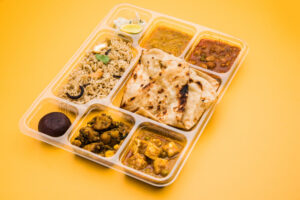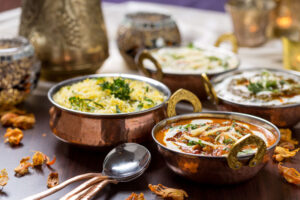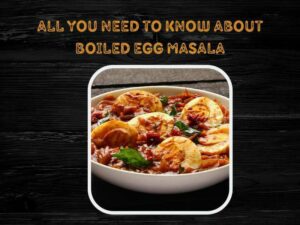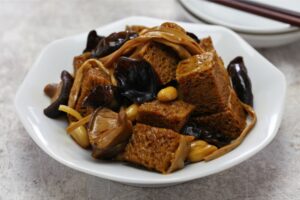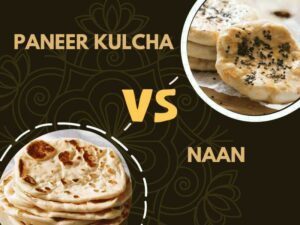Paneer The Versatile Indian Dish
Paneer/cottage cheese is the most loved vegan food item which can be easily made at home. But Vinegar vs lemon for paneer is always a catch-22 situation while making homemade paneer.
The origin of paneer, the king of all-vegan dishes, has different theories regarding its birth. However, the widely accepted theory is that, as its name suggests, it has its origin in Persia and was introduced to India by Mughal invaders.
Paneer, also known as “Ponnir” or “chhena” or non-melting Indian cottage cheese, is a soft, white, and creamy product made from cow or Buffalo milk by curdling the hot milk generally with vinegar or lemon.
Among the various type of vinegar available, White vinegar is mostly used and recommended as it is colorless, so the color of fresh paneer will not be affected. For Industrial or large-scale production, citric acid is used.
Paneer is commonly used in many Indian dishes to add flavor to a meal. It has a distinct flavor, but when added to curries or sauces, it elevates the flavor of the food. Paneer is the finest meat alternative in any cuisine. It is high in protein and includes necessary nutrients for human health.
Acidic Reagents Used In Curdling Milk
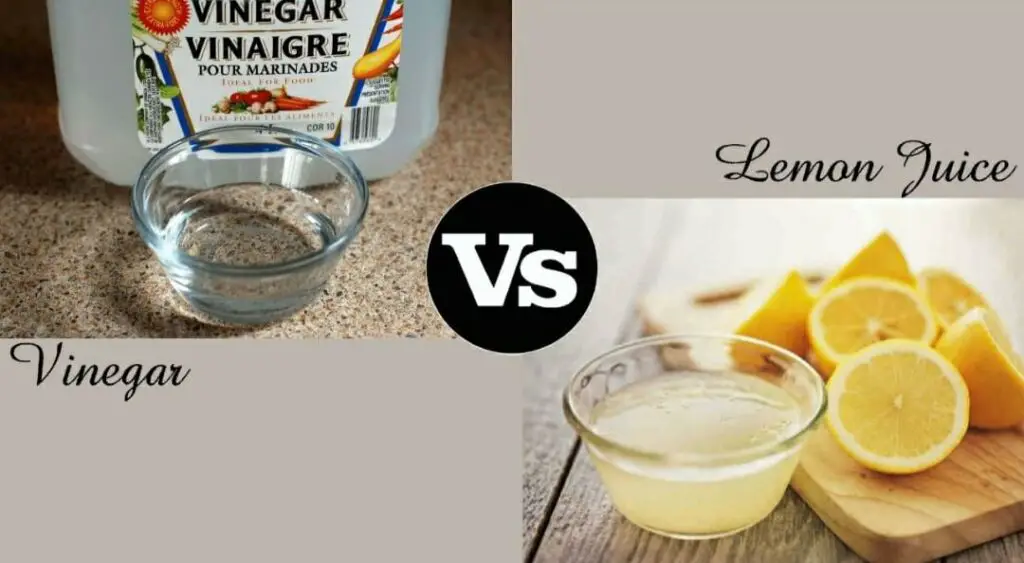
Vinegar vs lemon for paneer making at home is generally a hot topic. Yogurt can also be used but is not the preferred one.
- Lemon juice yields soft creamy paneer and has a lemony flavor. So it has to be rinsed well. Too much Lemon juice will make the cheese grainy.
- Vinegar curdles the milk faster, and the paneer is firm, but proper quantity has to be used. Otherwise, the taste of the paneer may be altered.
- Yogurt gives soft yet firm paneer, and rinsing the paneer may be skipped. But it has to be well-drained by squeezing the whey.
Homemade paneer with lemon juice vs vinegar: The pros
| The pros of lemon | The pros of vinegar |
| Juice is fresh and naturally produced from the fruit. | No mess is created like spoiling of hands is done as vinegar requires only pouring. |
| Health benefits: lemon juice aids in digestion. It has many micronutrients and antioxidants which are beneficial to our health. It is also a rich source of vitamin c. | Storage-convenient and longer shelf life due to its acidic nature without refrigeration. No scope for adulteration. |
| It is a tried and tested grandma’s recommendation. | Availability: easily available throughout the year, in all grocery stores throughout the year, around the world. |
| Lovely mellow and delicate flavor. | Cost-economical and pocket friendly. |
| The paneer produced is soft, creamier, and smoother. | The paneer produced is firmer, tougher, and drier. |
I used lemon juice. Texture a bit softer than vinegar. Super easy and fresh. What do you make with your paneer?
— NYFarmer (@NYFarmer) July 29, 2018
Vinegar or lemon juice for paneer: The cons
| The cons of lemon | The cons of vinegar |
| Storage: No shelf life and requires refrigeration or immediate use. The chances of adulteration cannot be ruled out. | Vinegar is produced synthetically. |
| Availability: may not be available throughout the year in all places. | Impact of flavor: the paneer has a little acidic smell like vinegar. |
| Cost is not always pocket friendly. During off-seasons, the cost is high. | Vinegar does not have any micronutrients. |
| Requires a squeezer and may be a bit messy as the juice while squeezing may spill. | The container which has to be of glass due to its acidic nature, requires careful handling. |
Which tastes better in paneer: lemon or vinegar?
One of the main points of contention in the debate of vinegar vs lemon for paneer is which tastes better. Though vinegar is equally good for making paneer, lemon juice produces the best results for delicious paneer by making it light, flavorful, and texture-perfect.
Here is a quick video of the recipe for anyone looking to use vinegar or lemon for paneer:
Here are also some precious tips on how to keep paneer soft.
Can you substitute vinegar for lemon juice in paneer?
For many people in deciding between vinegar vs lemon for paneer, they will mostly favor lemon. But if you are running out of lemon juice, vinegar can be a perfect substitute as it also makes the curdled milk and is mostly available at everyone’s home. White vinegar should be used in place of lemon.
Which milk to use?
You can use both cow and buffalo milk, but it should be fresh milk. However, for making sweets, cow milk is the preferred one. Regarding skimmed or un-skimmed milk, the unskimmed milk will yield a much smoother paneer due to the fat content in it. But for heart patients and weight management, skimmed milk is a good choice.
Homogenized pasteurized milk takes more time to curdle due to the preservatives in it so use raw milk. Avoid using non-fat milk as they have less content to make good quality and amount of paneer. The most important point is never to use spoiled milk.
How much acid to use?
There is no standard amount of acidic agent to use per liter depending entirely on the kind of milk. Homogenized milk may require more; in the case of farm-fresh or unpasteurized, a few drops may do the trick.
Vinegar or lemon juice for paneer; which acidic reagent to use?
Milk curdling by lemon juice or vinegar for paneer is possible due to the acids present in them. Coagulation occurs when protein in milk solids is heated up and an acid is added to it. Once curdling occurs in the milk, the white particles separate themselves from the cloudy pale greenish liquid of the whey. But the question of lemon versus vinegar always nags the mind when both the options are available. So let us discuss some more pros and cons of lemon versus vinegar.
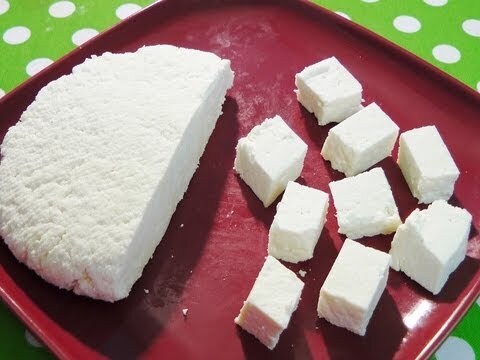
What is the difference between vinegar or lemon for paneer?
Type of acid in lemon juice and vinegar are quite different. Lemon juice has five to six percent citric acid which is Tribasic in nature (It has three replaceable hydrogen atoms) and three carboxylic acid groups. The boiling point is about 310 degrees Celsius, whereas vinegar has, on average seven percent acetic acid, which is monobasic in nature (It has one replaceable hydrogen atom), and one carboxylic acid group. The boiling point is 118 degrees Celsius.
Which is more acidic: Vinegar or Lemon juice?
Lemon juice and Vinegar both turn litmus paper blue as both are acidic. The PH value of lemon juice is between 2, and the PH value of vinegar is 3, so lemon juice is a bit more acidic than vinegar.
How does vinegar or lemon curdle milk?
Casein peptides are negatively charged, and the hydrogen ions in vinegar or lemon juice are positively charged so, when the two are mixed, the hydrogen ion and casein protein attract each other and form white lumps called curd. And so the process is called curdling.
Year 5 mixed hot milk and vinegar to show an irreversible change. There was a chemical reaction which separated the milk solid or curd from the whey (milk liquid). After using a sieve to separate the curd from the whey, it cooled down and became paneer cheese. pic.twitter.com/Y95zCBiXYV
— Mayflower Primary (@MayflowerPSch) December 8, 2021
Is Eating Paneer Good for Health?
Bodybuilding, weight reduction, improved body metabolism, blood sugar control, reduced body and joint problems, improved immune system, cancer prevention, and many more benefits are all possible with paneer in your diet.
Paneer is an important source of nutrients for vegetarians who do not acquire their protein from high-protein foods such as meat. It contains potassium, which aids memory loss, as well as selenium, which aids in the treatment of infertility. It also contains calcium, which helps to strengthen our teeth and bones.
Side-Effects of Paneer
Paneer has certain negative side effects as well. Food poisoning, skin sensitivities, diarrhea, and other problems can occur when paneer is of poor quality.
It can be detrimental to heart patients if they consume it on a daily basis without engaging in some form of activity because it raises cholesterol levels. People who are allergic to dairy products should avoid it, as well as any other type of cheese. And, by the way, can pregnant women eat paneer?
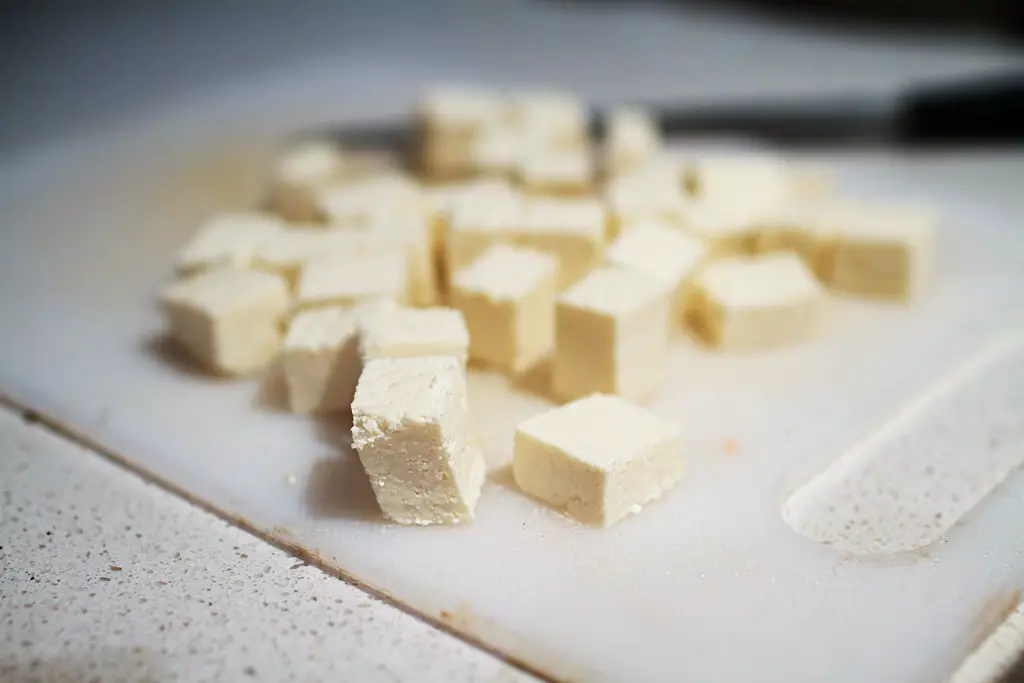
Nutritional Value of Paneer
Here is the nutritional value of 40g of paneer.
- Energy – 103 Kcal
- Protein – 7.5 grams
- Calcium – 190 mg
- Folates – 37 mg
- Phosphorus – 132 mg
- Carbs – 5 grams
- Fat – 6 grams
What is the difference between Paneer and Tofu?
When compared to tofu, paneer has a distinct and different flavor. It also has a softer texture than tofu.
What is the difference between Cheese and Paneer?
Paneer is a fresh cheese made by curdling the milk with lemon juice, and vinegar, unlike other types of cheese, it is neither aged nor fermented. Thus, it can be used right away after being prepared. It gets firm and non-melting, making itself quite useful for grilling purposes. And in case you would wonder “can paneer be frozen?”, we have got the answer for you.
Home Made Paneer vs store-bought paneer
Homemade Paneer is much better in quality, taste, freshness, and flavor than the frozen ones available in the market which remain hard after thawing and lacks freshness and milky texture.
We also have the advantage of making it from skimmed or full-fat milk according to our requirements. It is good to make Paneer from skimmed milk for weight-conscious and heart patients.
The best part about making paneer at home is that the ingredients and items required are few. You’d need milk, a cheesecloth, and acids to coagulate milk. The only thing you will be pondering is which acid to use for curdling milk.

